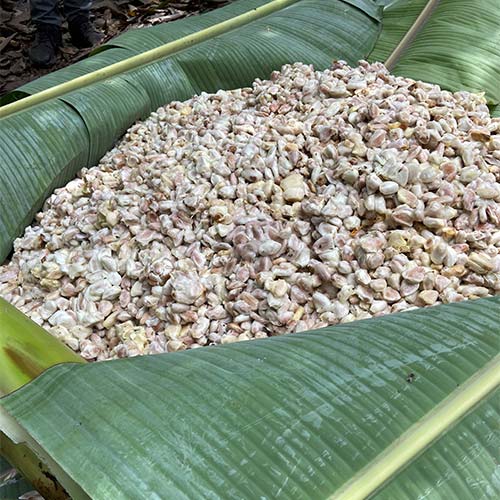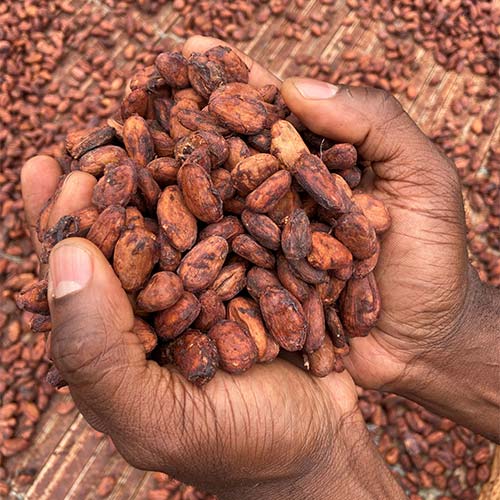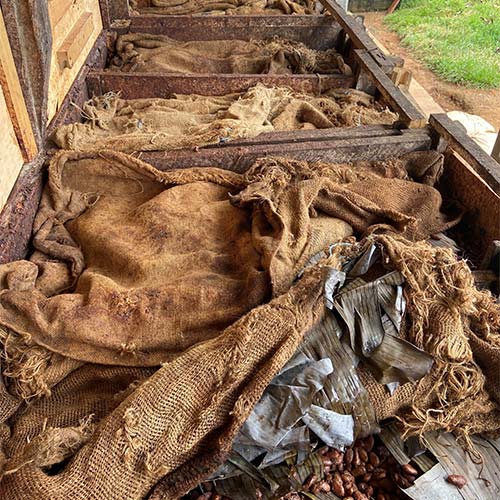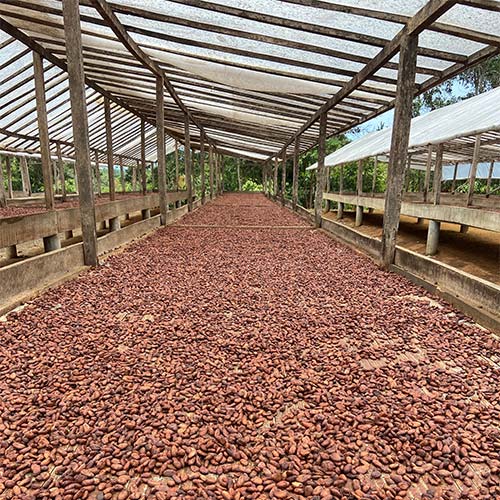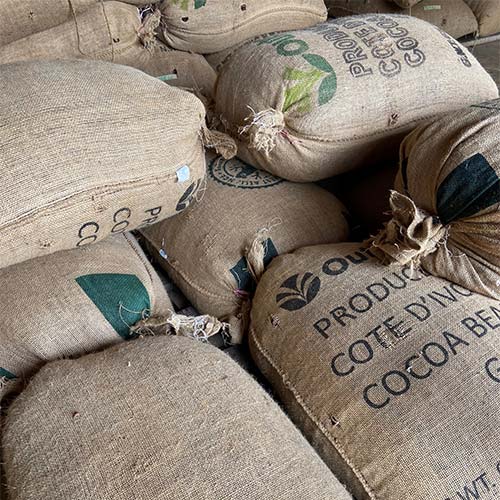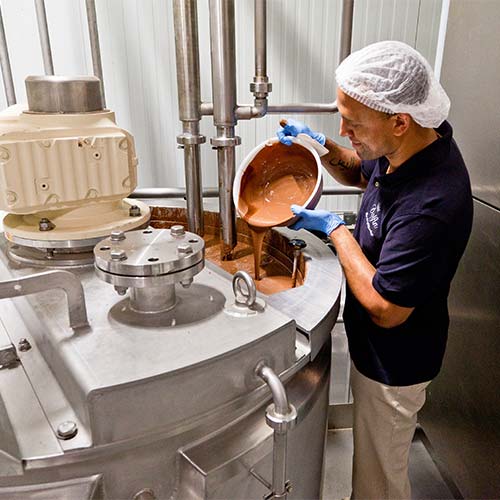The manufacturing process of Dolfin chocolate
How is Dolfin chocolate produced? From cocoa tree to chocolate bar, discover all the production stages for our delicious superior quality chocolate.
1.
In the cocoa tree plantations
The cocoa pod harvest
The Dolfin chocolate adventure begins in the cocoa tree plantations. Approximately three years after planting, cocoa trees flower and then produce fruit: the pods. After a number of months, the pods develop and change colour. They change from green, to red, and then to yellow.
After 4-6 months, the pods are ripe and ready to be harvested. In order to remove the pods from the cocoa tree, the cocoa farmer uses secateurs for the pods within reach and a pruning hook for those located at height. This is delicate work: the producer must cut the stalk as close as possible to the pod so as not to damage the tree. The next harvest depends on it!
Breaking the pods
In the hours following the harvest, the pods must be opened to extract the precious cocoa beans. This is known as breaking the pods. The producer opens each pod using a machete. By hand, the producer separates the fresh beans from the mucilage, a white pulpy substance present inside the pod. Each pod contains approximately 40 cocoa beans.
2.
Examination of the cocoa beans at the Dolfin centre
At a maximum of 6 hours after harvesting, the fresh cocoa beans are transported to our fermentation centre, three times a week. On site, they are laid out on a tarpaulin so that our experts can examine their quality.
The beans are then weighed and packaged in 10 kg sacks. The fresh beans contain the sweet pulp needed for fermentation. On average, they weigh three times more than dried beans. The producer receives the price per kilo divided by three, plus a “quality bonus” of 100 FCFA thanks to our Cocoa Act 4 programme.
3.
The fermentation of cocoa beans
The fermentation of cocoa beans is key It allows for the chocolate flavours to develop. It takes place in 3 stages, over approximately 6 days.
Anaerobic fermentation
Over two days, the fresh cocoa beans ferment in wooden crates, “A”, covered in jute bags and banana leaves. The flavours begin to develop through a natural chemical reaction. A strong smell of alcohol can be detected.
Aerobic fermentation
After two days of fermentation, the cocoa beans are stirred and transferred into a second container, “B”, for a further two days. During this transfer, the beans and the alcohol from the anaerobic fermentation process come into contact with oxygen. The alcohol is then converted to acetic alcohol. The beans change colour: changing from white to mauve.
The final fermentation
Finally, the cocoa beans are stirred in a third container, “C”, for two days. Inside, the temperature can reach up to 55°C! The internal colour of the beans changes from mauve to brown.
To check fermentation, we carry out a “Cut Test”. The more brown the inside, the more fermented the bean. If we observe that in 100 beans, 10% are still mauve inside, a third stirring process takes place for a further two days.
4.
Drying
The fermented cocoa beans are spread on drying benches. The air and sun dry them naturally. During the drying process, the beans are again inspected by our experts. The small residual skins are removed in order to stop the fermentation process. After several days (maximum of 11 days in rainy periods), the cocoa beans are dry.
5.
Roasting and grinding
The dried cocoa beans are then put into sacks and transported to the first processing site. There, they are roasted for around ten minutes. During the cooking process, the beans develop their flavours.
The roasted beans are ground to a paste known as cocoa mass. After pressing, the paste is turned into cocoa butter or cocoa powder.
6.
The manufacturing process of chocolate
At our Chocolaterie, the cocoa mass is mixed with other ingredients to obtain chocolate. Depending on the ingredients added (sugar, milk powder, cocoa powder and cocoa butter), you create dark chocolate, milk chocolate or white chocolate. This chocolate goes through a conche stage, then tempering to make it smooth, shiny and crisp.
Finally, the chocolate is poured into a mould to create its shape: bars, eggs, etc. Depending on the recipe, our Master Chocolatiers incorporate 100% natural superior quality ingredients in order to obtain the irresistible flavour of a Dolfin chocolate!

